Model: A300 “Modern Renaissance” Circassian Walnut
Serial # SM 2503
Years: 1912 (129 were sold to Dec 31 1914)
Original Cost: $300
Case/Cabinet size: 49.5"h x 21.5d x 23w
Turntable/Mandrel Size: 12"
Reproducer/Soundbox: Diamond Disc
Motor: Double Spring as in the A250
Horn Dimensions: 17"w x 12"h
Repro Parts: None
Current Value Mint: Don’t know
Interesting Facts: See Below
Favorite Characteristics: See Below
Introduced in late 1912, this is one of the first Edison disc phonographs and probably one of the first 25 model A300s made. Only 129 of the A300 were ultimately sold according to George Frow’s The Edison Disc Phonographs page 123.
An internal factory memo dated July 18, 1912, a copy of which was provided me some years back by the late Mr. Frow, includes instructions to take 25 of the Amberola cabinets in circassian walnut and “manufacture these over from the Amberola cabinets now in stock.” It appears this example is one of that first 25. (Mr. Frow added a picture I sent him to page 123 of the later softcover edition of his book).
Because the cabinet was designed and fitted for an Amberola I mechanism, it’s about 2 inches shorter than the later A250s and A300s, has the "earlier “cloven hoof” style front feet, the Amberola side vents and unused mounting holes are visible inside to make it accomodate the Amberola 1 mechanism. Various alterations were subsequently made at the factory including the following:
- The point at which the lid support is mounted to the lid is moved back a couple of inches from it's original location. This has the effect of locking the lid open at about a 45 degree angle as opposed to the less steep angle of some of the Amberolas.
- The side of the cabinet where the record cut-out is located for an Amberola I (to slide the cylinder on and off) has been cut down and replaced.
- Drawers were fitted for discs. The bottom record drawer was designed to fit 12 inch Diamond Disc records even though except for sample records and the much later Edison long play records, (1926), Edison never produced a 12 inch disc. In late 1912 it was anticipated that they would market 12 inch discs. There is very little clearance on the topside of either drawer. Some 10" discs bump the top side of the drawer frame when you try to open/close the drawer. My Edison 12" sample record which I put into the bottom drawer clears by no more than a 16th of an inch. You can’t use the bottom drawer for 10" records at all. They fall through the bottom so you can’t close the drawer. Also it’s almost impossible to pull 10" records out of the bottom drawer because the record falls through and sinks below the top of the individual wooden dividers.
(Click on any of the images below to view a larger version of it.)
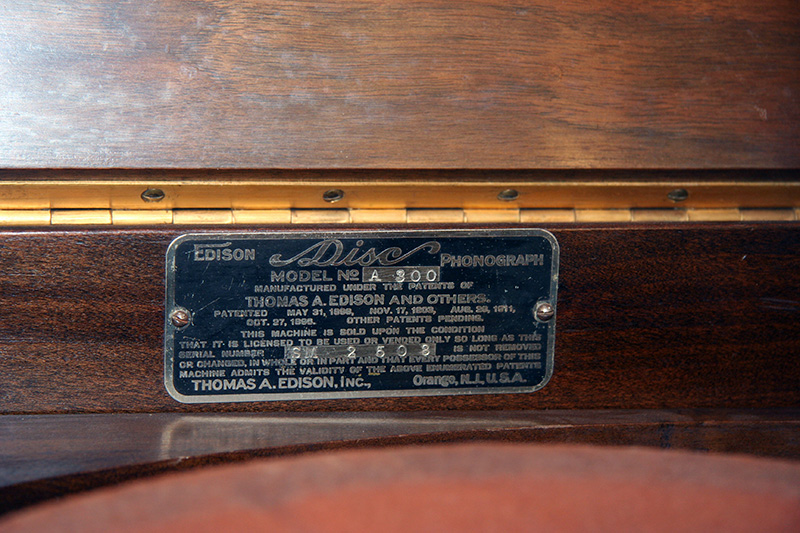

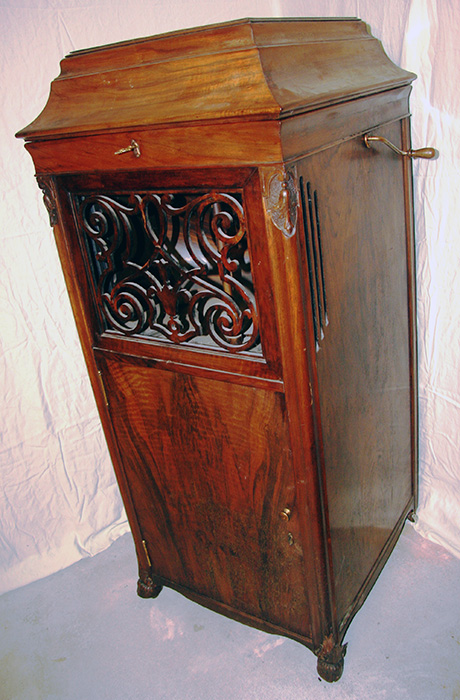

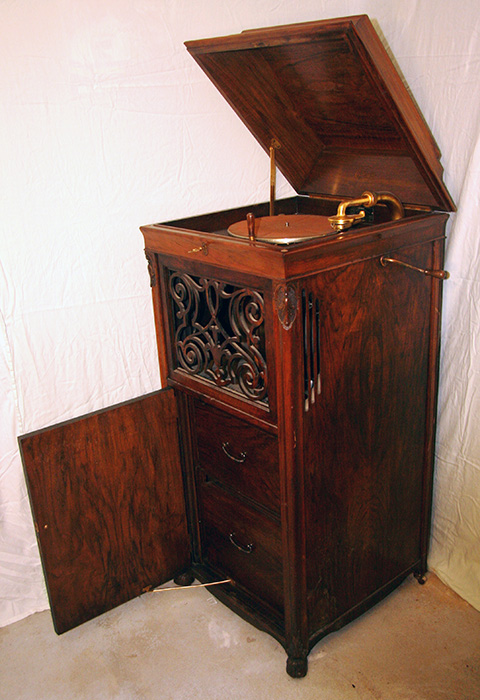
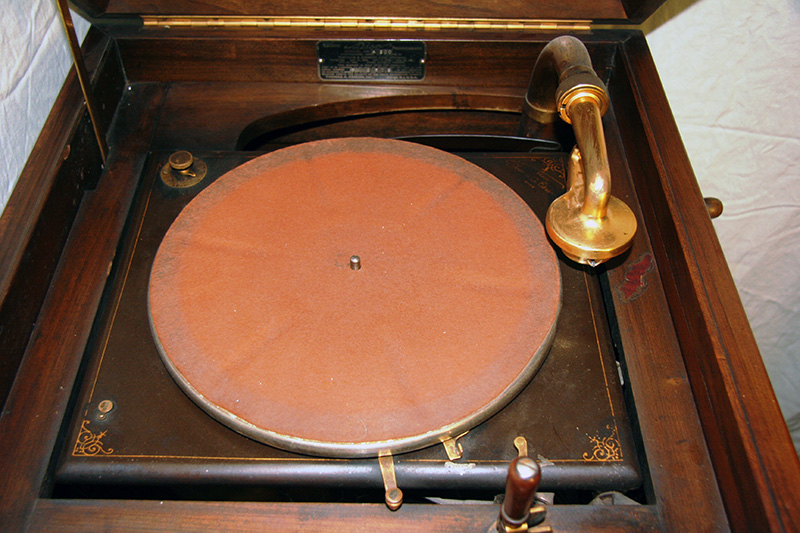
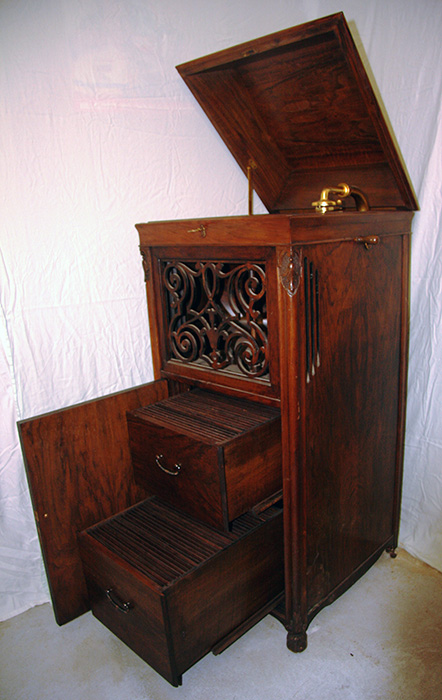
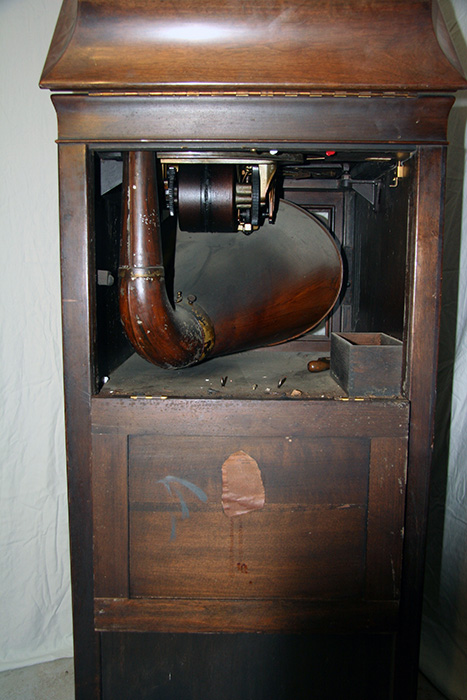

![[The Talking Machine Forum - For All Antique Phonographs & Recordings]](/styles/we_universal/theme/images/the_talking_machine_forum.png)
